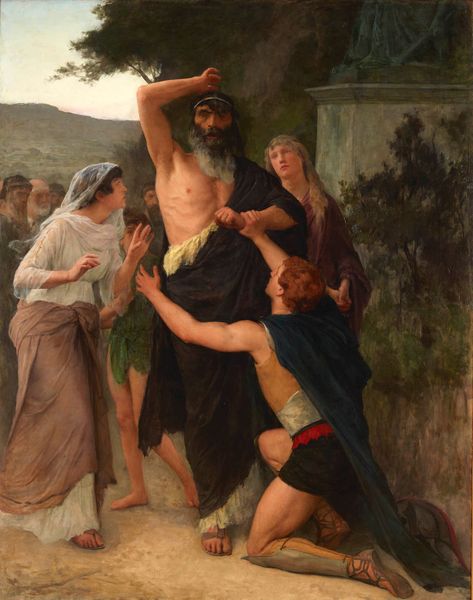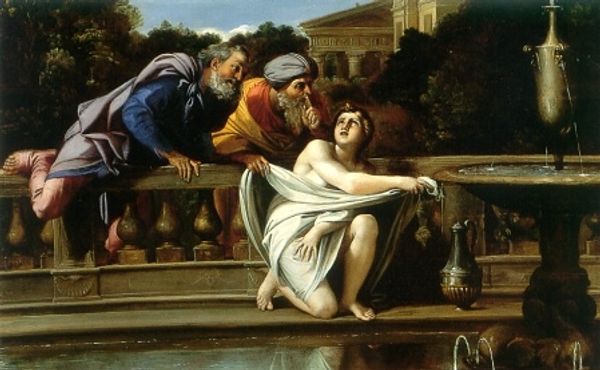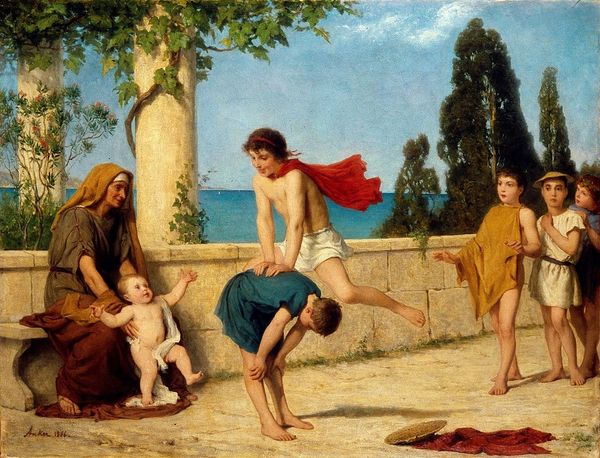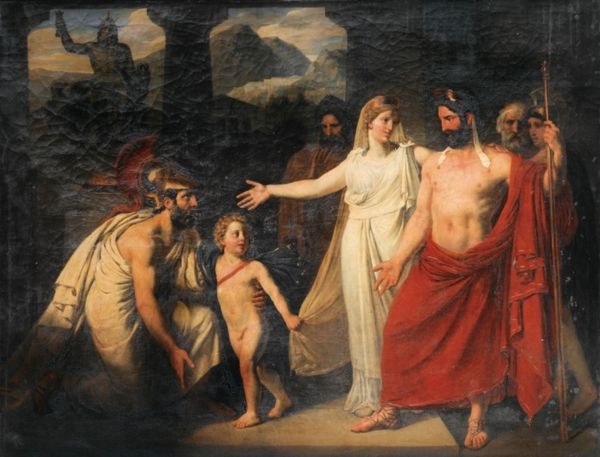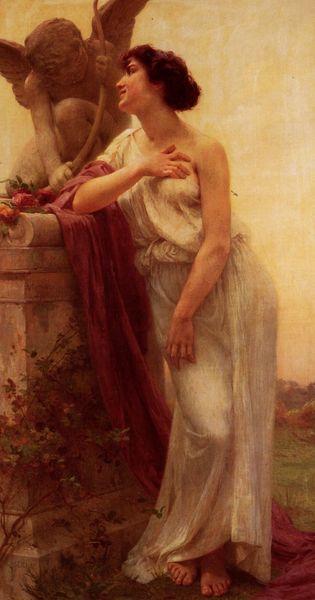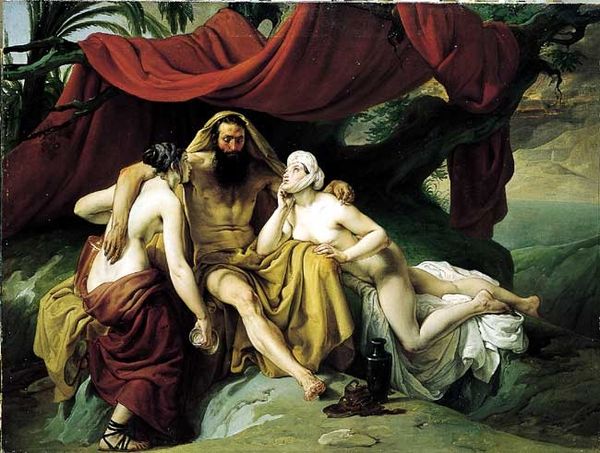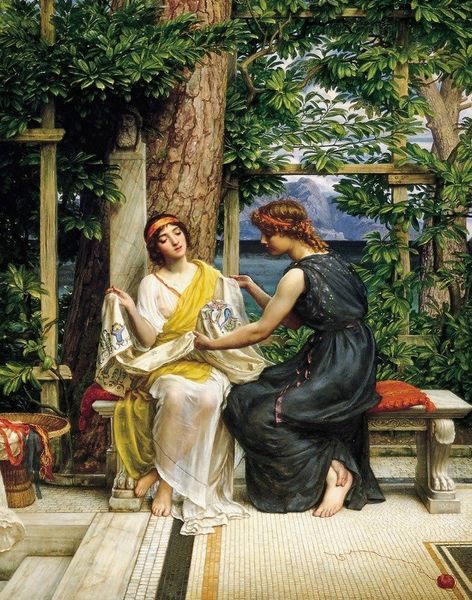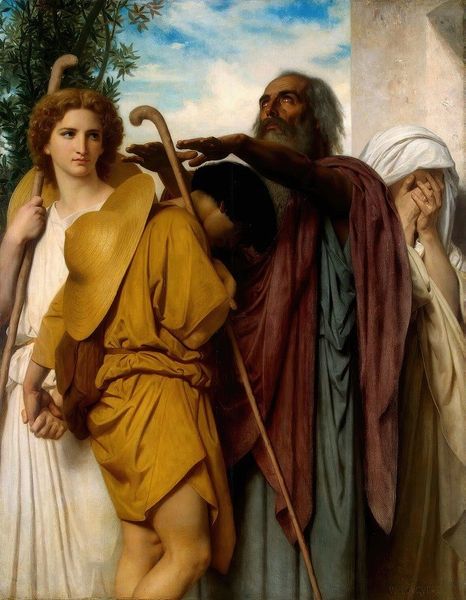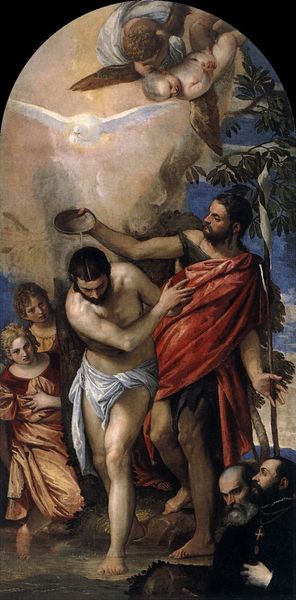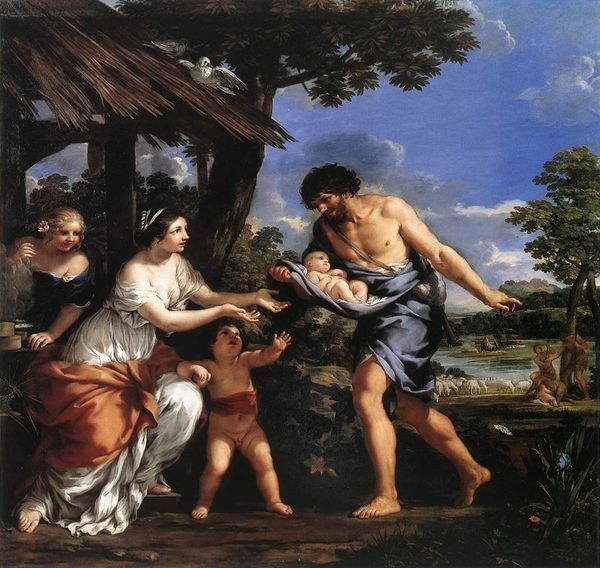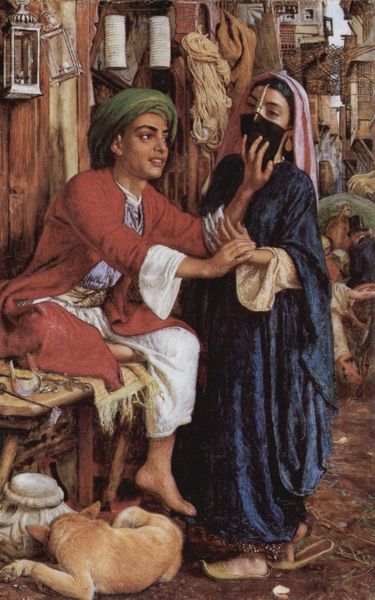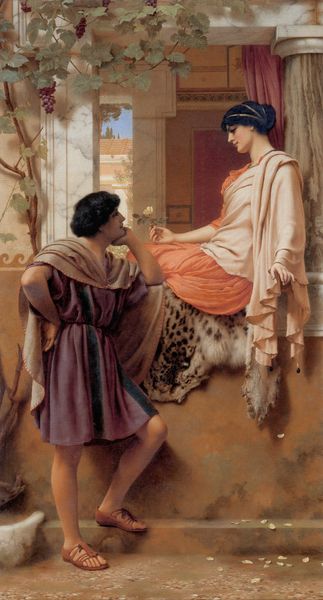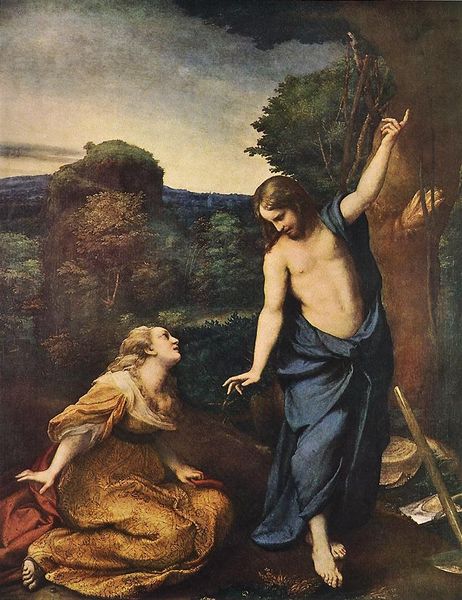
The Prodigal's Return 1869
0:00
0:00
edwardjohnpoynter
Brigham Young University Museum of Art, Provo, UT, US
painting, oil-paint
#
narrative-art
#
painting
#
oil-paint
#
figuration
#
oil painting
#
history-painting
#
academic-art
#
portrait art
#
realism
Dimensions: 120 x 91.5 cm
Copyright: Public domain
Editor: This is Edward John Poynter’s 1869 painting, "The Prodigal's Return," done in oil. It evokes a really tender mood to me. The light highlights the figures locked in an embrace, but what stands out most is the social dynamic playing out here. How do you see this painting operating within its historical context? Curator: The interesting thing about history paintings is how much they say about the time they were made, versus the moment they depict. In 1869, you have rising industrialization and shifts in social structures. What stories did people *want* to see visualized, and why? Editor: So it's not just about representing the biblical story itself, but about the values being emphasized at the time? Curator: Precisely. Look at the careful staging. The prodigal is gaunt, barefoot, clearly humbled. The father's embrace is a display of wealth, stability, and forgiveness—qualities deeply valued, especially in times of upheaval. Who benefitted from this imagery? Editor: Those in power? By visually promoting ideals like forgiveness and stability, were artists reinforcing a specific social hierarchy? Curator: It's a possibility worth considering. Consider who had access to art like this and what messages were being subtly reinforced about the ideal family and societal structure. The "return" narrative often functions as a social corrective. Editor: That makes me see the piece so differently! I was focused on the emotional element, but it’s all wrapped up in these power dynamics. Curator: Exactly! Now we can ask questions about what societal functions that emotional appeal might have been serving. Editor: I appreciate how this unveils so many more meanings. I'm keen to learn more about Poynter's intentions when making it.
Comments
No comments
Be the first to comment and join the conversation on the ultimate creative platform.
